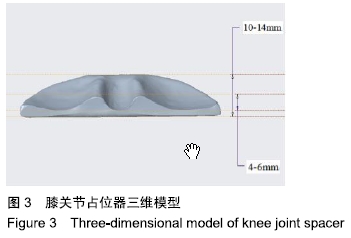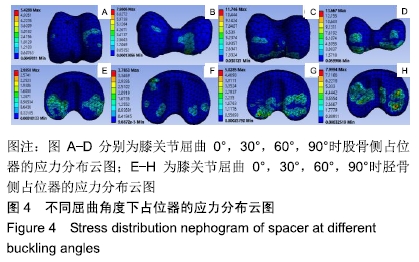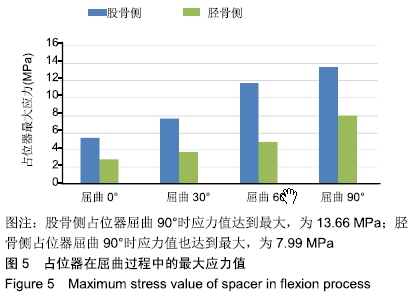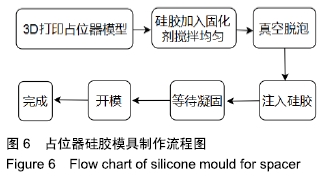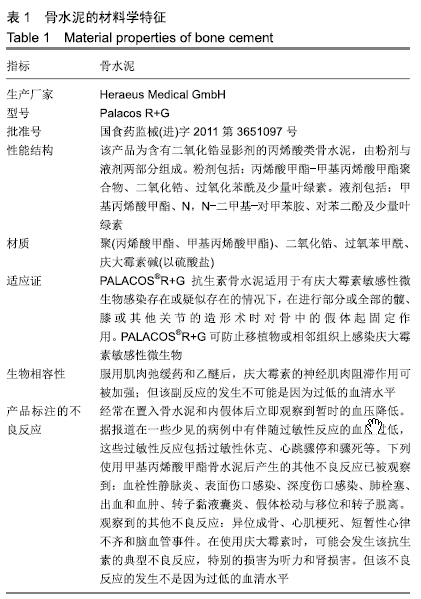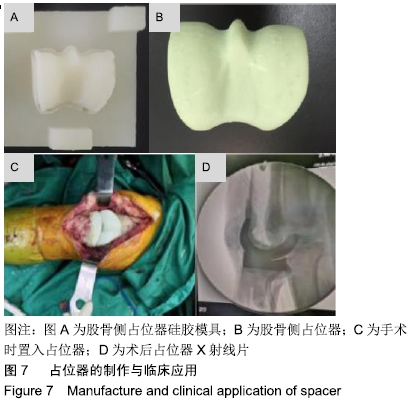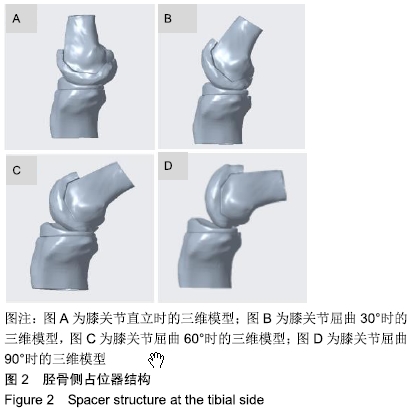[1] LIMA AL, OLIVEIRA PR, CARVALHO VC, et al. Periprosthetic joint infections. Interdiscip Perspect Infect Dis. 2013;2013(7):1-7.
[2] PARVIZI J, PAWASARAT IM, AZZAM KA, et al. Periprosthetic joint infection the economic impact of methicillin-resistant infections. J Arthroplasty. 2010;25(6):103-107.
[3] 王龙超,彭慧明,林进,等.全膝关节置换术后假体周围感染的手术方式及预后[J].中华骨科杂志,2018,38(3): 129-136.
[4] WINDISCH C, BRODT S, ROEHNER E, et al. C-reactive protein course during the first 5 days after total knee arthroplasty cannot predict early prosthetic joint infection. Arch Orthop Trauma Surg. 2017;137(8):1115-1119.
[5] CHIANG CC, CHIU FY. Cefuroxime-impregnated cement and systemic cefazolin for 1 week in primary total knee arthroplasty: An evaluation of 2700 knees. J Chin Med Assoc. 2012;75(4): 167-170.
[6] KOTELNICKI J, MITTS K. Surgical treatments for patients with an infected total knee arthroplasty. JAAPA. 2009;22(11):40, 43-46.
[7] TOMS AD. The management of peri-prosthetic infection in total joint arthroplasty. J Bone Joint Surg Br. 2006;88(2):149-155.
[8] VIKTOR J, WASSILEW GI, PERKA CF, et al. Cerclages after femoral osteotomy are at risk for bacterial colonization during two-stage septic total hip arthroplasty revision. J Bone Joint Infect. 2018;3(3):138-142.
[9] COLLEONI JL, RIBEIRO FN, MOS PAC, et al. Venous thromboembolism prophylaxis after total knee arthroplasty (TKA): aspirin, vs. rivaroxaban. Rev Bras Ortop. 2017;53(1):22-27.
[10] 于强,田京.抗生素骨水泥占位器在膝关节假体周围感染二期翻修中的应用[J].中国组织工程研究, 2018,22(31):5048-5055.
[11] GEORGE J, MAHMOOD B, SULTAN AA, et al. How Fast Should A Total Knee Arthroplasty Be Performed? An Analysis of 140,199 Surgeries. J Arthroplasty. 2018;33(8):2616-2622.
[12] TIBBO ME, CHALMERS BP, BERRY DJ, et al. Primary total knee arthroplasty in patients with neuropathic (charcot) arthropathy: contemporary results. J Arthroplasty. 2018;31(9):2815-2820.
[13] 付君,李想,倪明,等. 髋臼加强型抗生素骨水泥占位器在假体周围感染髋臼骨缺损翻修中的应用[J].中华骨科杂志,2018,38(3):143-149.
[14] 宗航帆,刘瑞宇,王坤正,等. 未使用占位器的二期翻修治疗髋关节置换术后感染[J].中华关节外科杂志(电子版),2018,12(2):163-167.
[15] 佚名. 部分旷置二期翻修治疗全髋关节置换术后假体周围感染的早期疗效[J]. 中华骨科杂志,2019,39(7):422-428.
[16] 孙海滨,吕尚军,朱书朝,等.3D打印技术在制作人工髋关节置换术后感染临时间隔器中的临床应用[J]. 中国矫形外科杂志,2016,24(13): 1239-1241.
[17] 王卫红,谷振光,杨子峰,等.自制含抗生素骨水泥占位器治疗人工髋关节置换术后感染[J].中国伤残医学,2015,23(13): 42-43.
[18] 张浩伟,宋科官.髋关节置换术后假体周围感染机制及治疗[J]. 中国组织工程研究,2015,19(48):7833-7833.
[19] 宋兴桂,李昕,宋俊雷,等.保留假体清创术治疗人工关节置换术后假体周围感染的临床研究[J].协和医学杂志,2019,10(4):370-374.
[20] WHITTAKER JP, WARREN RE, JONES RS, et al. Is prolonged systemic antibiotic treatment essential in two-stage revision hip replacement for chronic Gram-positive infection? J Bone Joint Surg Br. 2009;91(1):44-51.
[21] 胡孔足(译). 抗生素骨水泥髋臼顶可增强人工髋关节感染翻修骨水泥占位器的稳定性[J]. 临床骨科杂志,2016,19(3):354-354.
[22] 李军伟,汝强,韩文龙,等. 采用可活动关节间隔垫的二期翻修术治疗人工膝关节术后感染[J].中国实用医刊, 2013, 40(17):16-18.
[23] LOVALLO J, HELMING J, JAFARI SM, et al. Intraoperative intra-articular injection of gentamicin: will it decrease the risk of infection in total shoulder arthroplasty. J Shoulder Elbow Surg. 2014;23(9):1272-1276.
[24] MCPHERSON EJ, LEWONOWSKI K, DORR LD. Techniques in arthroplasty. Use of an articulated PMMA spacer in the infected total knee arthroplasty. J Arthroplasty. 1995; 10(1):87-89.
[25] 张强,周勇刚,陈继营,等. 术中自制临时关节型抗生素骨水泥占位器治疗人工膝关节置换术后感染[J].中国骨伤,2013,26(2):119-123.
[26] 李锦华,邵琴,赵宙,等. 抗生素骨水泥占位器在髋关节置换后感染翻修术中的应用[J].临床外科杂志,2013,21(5):383-384.
[27] 林志炯,高大伟,董月珍,等. 骨水泥占位器在髋关节感染二期翻修术的临床疗效[J]. 中华关节外科杂志(电子版), 2017,11(4):10-15.
[28] 王利,哈巴西•卡肯,殷剑,等.自制活动型抗生素骨水泥间隔器:在全膝关节表面置换后感染翻修中的应用[J].中国组织工程研究,2015, 19(13):2017-2022.
[29] GARG P, BANDYOPADHYAY U, MITRA S, et al. Antibiotic- impregnated articulating cement spacer for infected total knee arthroplasty. Indian J Orthop. 2011;45(6):535 -540.
[30] 张强,金志刚,周勇刚,等.抗生素骨水泥占位器治疗髋和膝关节置换术后感染的研究进展[J].中华关节外科杂志(电子版), 2008,2(5): 572-577.
[31] 张岚峰. 骨水泥型髋关节假体的生物力学特性及其摩擦学研究[D].徐州:中国矿业大学,2017.
[32] PAHLEVANZADEH F, BAKHSHESHI-RAD HR, HAMZAH E. In-vitro biocompatibility, bioactivity, and mechanical strength of PMMA-PCL polymer containing fluorapatite and graphene oxide bone cements. J Mech Behav Biomed Mater. 2018;82(6):257-267.
[33] ZHANG X, YANG HL, LI S, et al. Natural diatomite particles: Size-, dose-and shape-dependent cytotoxicity and reinforcing effect on injectable bone cement. J Mater Sci Technol. 2018;34(6):1044-1053.
[34] BOELCH SP, JORDAN MC, ARNHOLDT J, et al. Antibiotic elution and compressive strength of gentamicin/vancomycin loaded bone cements are considerably influenced by immersion fluid volume. J Mater Sci.2019;30(2):23-29.
[35] LIAO J, LI Y, LI H, et al. Preparation, bioactivity and mechanism of nano-hydroxyapatite/sodium alginate/chitosan bone repair material. J Appl Biomater Funct Mater. 2018;16(1):28-35.
[36] SOPCAK T, MEDVECKY L, GIRETOVA M, et al. Hydrolysis, setting properties and in vitro characterization of wollastonite/ newberyite bone cement mixtures. J Biomater Appl. 2018;32(7): 871-885.
[37] SPRINGER BD, LEE GC, OSMON D, et al. Systemic safety of high-dose antibiotic-loaded cement spacers after resection of an infected total knee arthroplasty. Clin Orthop Relat Res. 2004;427: 47-51.
[38] 唐江安,张岩,应辉. 抗生素骨水泥剂量差异对行关节置换术患者康复效果及再发感染风险的影响[J].临床和实验医学杂志,2019,18(2): 70-73.
[39] ZHAO QH, ZHU FB, CAI XZ, et al. Effects of low-frequency pulsed wave ultrasound on the shear properties of the interface of vancomycin-loaded acrylic bone cement-stem. Zhonghua Yi Xue Za Zhi. 2017;97(7):545-550.
[40] HSU YH, HU CC, HSIEH PH, et al. Vancomycin and ceftazidime in bone cement as a potentially effective treatment for knee periprosthetic joint infection. J Bone Joint Surg. 2017;99(3): 223-231.
[41] HAASE K, ROUHI G. A discussion on plating factors that affect stress shielding using finite element analysis. J Biomed Sci. 2010; 5(2):129-141.
[42] HA CW. A technique for intraoperative construction of antibiotic spacers. Clin Orthop Related Res. 2006;445(445):204-209.
|

